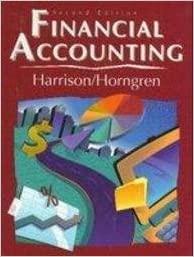QUESTION 20 After the closing entries have been posted, which of the following accounts would still have a balance? a. Salaries Expense b. Miscellaneous Revemes Oc Supplies Expense d. Accumulated Depreciation Equipment QUESTION 21 After the closing entries are journalized and posted, which of the following accounts would NOT have a balance? a. Service Revenue b. Cash c. Accounts Payable d. Office Supplies QUESTION 22 After the accounts are closed and the journal entries have been posted, which of the following accounts would have a balance? a. Payroll Taxes Expense b. Miscellaneous Expense c. Supplies d. Professional Expense QUESTION 23 After posting the adjusting entries, the balance of the depreciation expense account should agree with the amount shown on the income statement True False QUESTION 24 Adjustments at the end of the period are not formally entered in the journal or posted to the accounts. O True False QUESTION 25 Adjusting entries are recorded and posted after closing entries. True False QUESTION 26 An income statement is an itemized statement for the purpose of providing information regarding the results of operations during a specified period of time. O True False QUESTION 27 An income statement is an itemized statement that provides information regarding the status of the assets, liabilities, and owner's equity of a business enterprise as of a specified date. True False QUESTION 28 Assets, liabilities, and the owner's capital account are closed at the end of the accounting period, True False QUESTION 29 Capital at the beginning of the month amounted to $4,000; net income for the month amounted to $1,000; and withdrawals for personal use during the month amounted to $2,000. Capital at the end of the month is a. $7,000 b. $5,000 O $3,000 O d. $2,000 QUESTION 30 Changes in owner's equity that result from investments or withdrawals of assets by the owner are included in the a, income statement Ob.chart of accounts c. statement of owner's equity. d. balance sheet QUESTION 31 Closing entries are made in the journal and posted to the ledger accounts True False QUESTION 32 Expenses on the income statement could be listed in alphabetical order by dollar amount. True O False QUESTION 33 Property, plant and equipment are assets that are expected to serve the business for many years. True False QUESTION 34 Owner's equity can be increased through a withdrawals by the owner. b.expenses exceeding revenues. O c. purchases of assets for cash. d. investments by the owner. QUESTION 35 Expenses on the income statement could be listed in the same order as they appear in the chart of accounts. True False lackboard.com/webapps/assessment/take/launch.jsp?course_assessment_id=_47754_1&course_id=_27368 uestion Completion Status: V > QUESTION 15 Match the terms with the definitions. The period of time required to purchase supplies and a. account form of balance sheet services and convert them back into cash. b. accounting cycle Prepared after posting the closing entries to prove the c classified balance sheet equality of the debit and credit balances in the general d. closing process ledger accounts. e. current assets A balance sheet with separate categories for current f. current liabilities assets, property, plant, and equipment, current liabilities, and long-term liabilities. g. Income Summary A balance sheet in which the assets are on the left and h. long-term liabilities the liabilities and the owner's equity sections are on 1. operating cycle the right j. permanent accounts Accounts that accumulate information across k. post-closing trial balance accounting periods, all accounts reported on the 1. property, plant, and equipment balance sheet m.report form of balance sheet A balance sheet in which the liabilities and the owner's n. temporary accounts equity sections are shown below the assets section. The steps involved in accounting for all of the business activities during an accounting period. Assets that are expected to serve the business for many years. Obligations that are due within either one year or the normal operating cycle of the business, whichever is longer, and that are to be paid out of current assets. Cash and assets that will be converted into cash or consumed within either one year or the normal operating cycle of the business, whichever is longer. Obligations that are not expected to be paid within a V > stion Completion Status: the right j. permanent accounts Accounts that accumulate information across k. post-closing trial balance accounting periods; all accounts reported on the 1. property, plant and equipment balance sheet m.report form of balance sheet A balance sheet in which the liabilities and the owner's n. temporary accounts equity sections are shown below the assets section The steps involved in accounting for all of the business activities during an accounting period. Assets that are expected to serve the business for many years. Obligations that are due within either one year or the normal operating cycle of the business, whichever is longer, and that are to be paid out of current assets. Cash and assets that will be converted into cash or consumed within either one year or the normal operating cycle of the business, whichever is longer. Obligations that are not expected to be paid within a year and do not require the use of current assets. A temporary account used in the closing process to summarize the effects of all revenue and expense accounts. Accounts that do not accumulate information across accounting periods but are closed, such as the drawing account and all income statement accounts. The process of giving zero balances to the temporary accounts so that they can accumulate information for the next accounting period. Click Save and Submit to save and submit. Click Save All.Answers to save all answers. E














